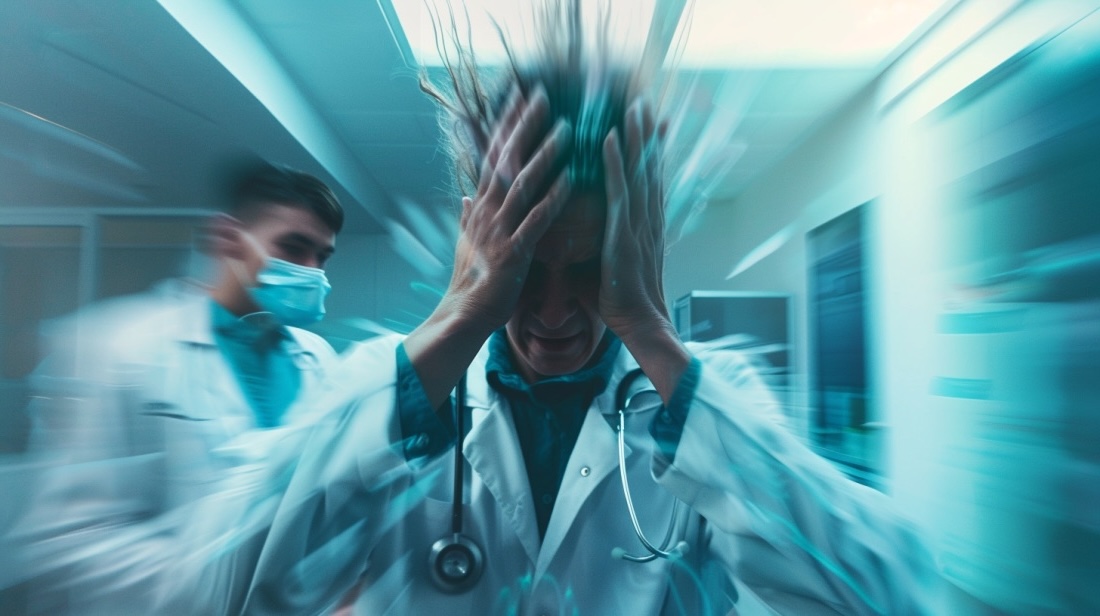
Bruns Syndrome is a rare neurological disorder that can leave many puzzled. Ever wondered what makes this condition so unique? Bruns Syndrome primarily affects the brain's ability to control eye movements and balance. This can lead to symptoms like sudden falls, dizziness, and erratic eye movements. Imagine trying to walk straight but feeling like the ground is shifting beneath you. That's a glimpse into the daily challenges faced by those with Bruns Syndrome. Understanding this condition is crucial for better diagnosis and treatment. Ready to dive into 30 intriguing facts about Bruns Syndrome? Let's get started!
Key Takeaways:
- Bruns Syndrome is a rare neurological condition linked to headaches, nausea, and mobility issues. Early detection and strong support systems are crucial for managing its impact on daily life.
- Ongoing research and various resources aim to improve understanding and treatment of Bruns Syndrome, offering hope for patients and families coping with this challenging condition.
What is Bruns Syndrome?
Bruns Syndrome is a rare neurological condition characterized by a specific type of headache and other symptoms. It often occurs due to a brain tumor or other mass in the posterior fossa, the area at the base of the skull. Let's dive into some fascinating facts about this condition.
-
Named After a Neurologist: Bruns Syndrome is named after Ludwig Bruns, a German neurologist who first described the condition in the late 19th century.
-
Posterior Fossa Tumors: The syndrome is commonly associated with tumors in the posterior fossa, which can affect the brainstem and cerebellum.
-
Headache Characteristics: Patients often experience severe headaches that worsen with changes in head position.
-
Nausea and Vomiting: These headaches are frequently accompanied by nausea and vomiting, making daily activities challenging.
-
Ataxia: Many individuals with Bruns Syndrome exhibit ataxia, a lack of muscle coordination affecting speech, eye movements, and walking.
Symptoms and Diagnosis
Understanding the symptoms and how Bruns Syndrome is diagnosed can help in early detection and treatment.
-
Vertigo: Vertigo, or a spinning sensation, is a common symptom, often triggered by head movements.
-
Double Vision: Diplopia, or double vision, can occur due to pressure on the cranial nerves.
-
Hearing Loss: Some patients experience hearing loss, particularly in one ear.
-
Facial Weakness: Weakness or paralysis of facial muscles may be observed.
-
MRI Scans: Magnetic Resonance Imaging (MRI) is crucial for diagnosing Bruns Syndrome, revealing tumors or other abnormalities in the posterior fossa.
Treatment Options
Treatment for Bruns Syndrome often involves addressing the underlying cause, such as a tumor.
-
Surgical Removal: Surgery to remove the tumor is a common treatment option.
-
Radiation Therapy: In some cases, radiation therapy may be used to shrink the tumor.
-
Chemotherapy: Chemotherapy might be considered, especially for malignant tumors.
-
Symptom Management: Medications can help manage symptoms like headaches and nausea.
-
Physical Therapy: Physical therapy can improve coordination and balance issues.
Impact on Daily Life
Living with Bruns Syndrome can significantly impact a person's daily activities and quality of life.
-
Mobility Challenges: Ataxia and vertigo can make walking and other movements difficult.
-
Work Limitations: Many patients find it challenging to maintain regular employment due to symptoms.
-
Social Isolation: The condition can lead to social isolation as patients may avoid activities that trigger symptoms.
-
Emotional Health: Anxiety and depression are common among those with Bruns Syndrome.
-
Support Systems: Strong support from family and friends is crucial for managing the condition.
Research and Future Directions
Ongoing research aims to improve understanding and treatment of Bruns Syndrome.
-
Genetic Studies: Researchers are exploring genetic factors that may contribute to the syndrome.
-
New Therapies: Innovative therapies, including targeted drug treatments, are under investigation.
-
Early Detection: Advances in imaging technology are improving early detection rates.
-
Patient Registries: Patient registries help track the condition's progression and treatment outcomes.
-
Clinical Trials: Participation in clinical trials offers access to cutting-edge treatments.
Support and Resources
Various resources are available to help patients and families cope with Bruns Syndrome.
-
Support Groups: Joining support groups can provide emotional support and practical advice.
-
Educational Materials: Access to educational materials helps patients understand their condition.
-
Financial Assistance: Some organizations offer financial assistance for medical expenses.
-
Advocacy: Advocacy groups work to raise awareness and funding for research.
-
Online Communities: Online forums and communities offer a platform for sharing experiences and advice.
Final Thoughts on Bruns Syndrome
Bruns Syndrome, a rare neurological disorder, presents unique challenges. Characterized by ataxia, headaches, and visual disturbances, it often results from tumors or lesions in the brain. Early diagnosis is crucial for effective treatment, which may include surgery, radiation, or medication to manage symptoms. Understanding the condition helps in providing better support to those affected. Awareness can lead to quicker interventions and improved outcomes. While research continues, staying informed about the latest developments is key. If you or someone you know shows symptoms, consult a healthcare professional promptly. Knowledge empowers us to make better decisions and offer the necessary care. Bruns Syndrome might be rare, but with the right information, we can make a significant difference in the lives of those impacted. Stay curious, stay informed, and always advocate for health.
Frequently Asked Questions
Was this page helpful?
Our commitment to delivering trustworthy and engaging content is at the heart of what we do. Each fact on our site is contributed by real users like you, bringing a wealth of diverse insights and information. To ensure the highest standards of accuracy and reliability, our dedicated editors meticulously review each submission. This process guarantees that the facts we share are not only fascinating but also credible. Trust in our commitment to quality and authenticity as you explore and learn with us.
